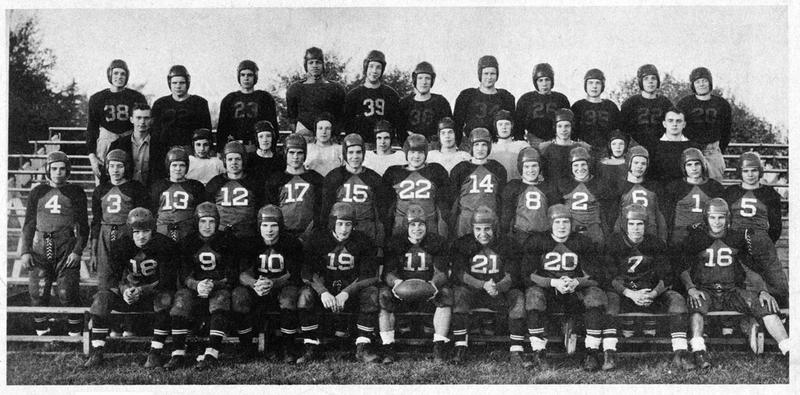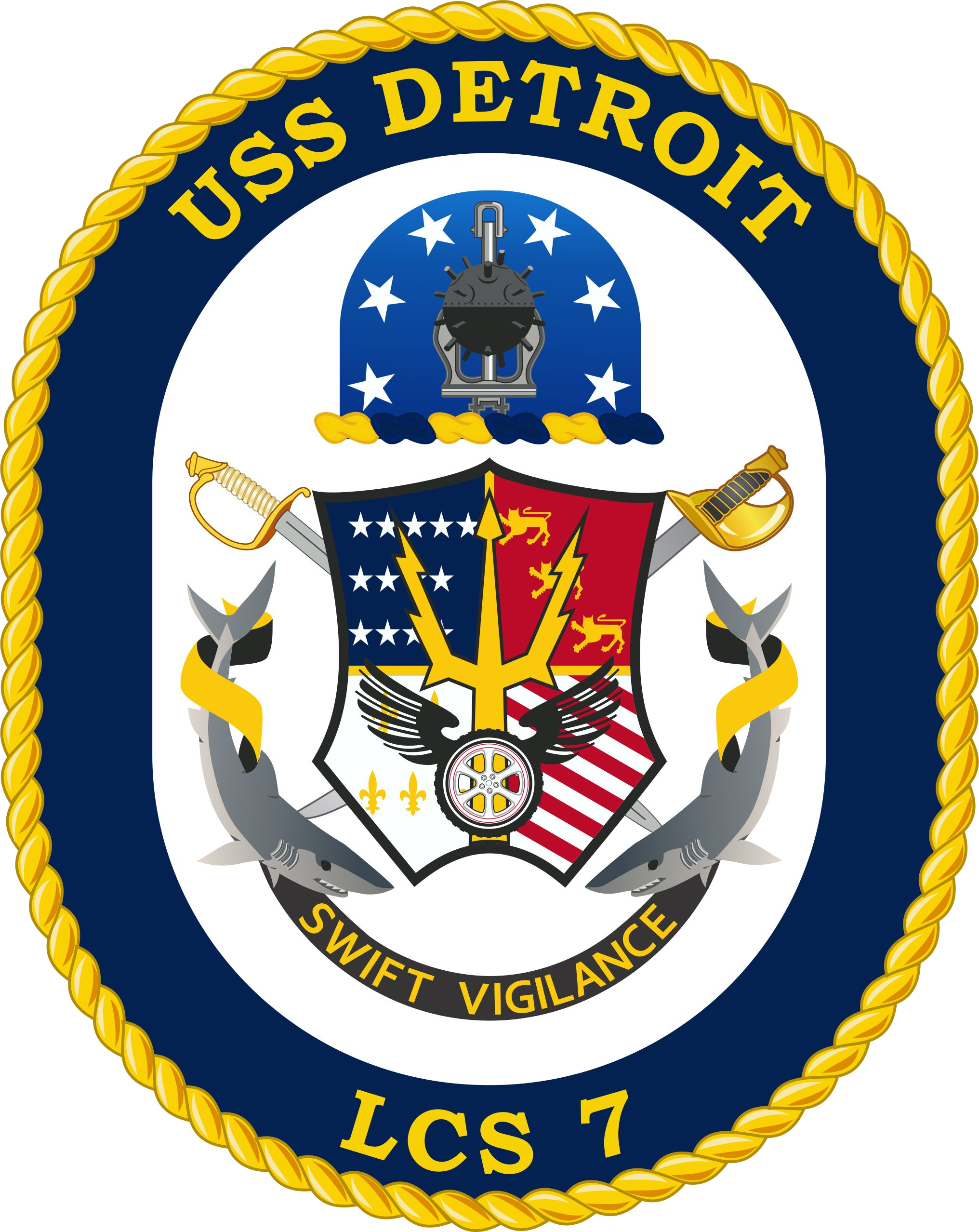Almost from its beginnings, Detroit has always sought physicians to care for the health of its citizens. In 1829 and 1837, there were small-pox outbreaks. On February 21 1849 the Detroit Common Council passes an act calling for the election of a city physician each year. In May 1857 the number was increased from one to four. By ordinance of January 31, 1860, the city was divided into three districts and a physician with a salaryof $300 was appointed to each.
Sources:
Detroit Historical Society Facebook Page
Silas Farmer, The History of Detroit and Michigan: Or, The Metropolis …, Volume 1. Detroit, S. Farmer & co., 1884.
The MSU community has access to an online edition via the HathiTrust.
Four Ypsilantians participated at this iconic moment, the liberation of Charleston, South Carolina. Entering the ruins of the town singing “John Brown’s Body,” the freedom fighters of the 55th Massachusetts Infantry liberate the citadel of the Confederacy on February 21, 1865. Dozens of other Black Ypsilanti soldiers would enter Charleston the following days with the 102nd USCT and 54th Massachusetts Infantry.
All three units would go on to participate in several actions together along the South Carolina coast, raiding plantations and storehouses, while tearing up rail tracks. At the very end of the war, these units participated in Potter’s Raid in which over 2000 enslaved people were liberated.
Source : South Adams Street circa 1900 Facebook Page,
Attracted to the abundant snows of the western Upper Peninsula, Norway native Carl Tellefsen quickly made his mark on the local skiing scene, eventually serving as founder and first president of the National Ski Association. The Association steadily grew in popularity and was a natural choice to house the National Ski Hall of Fame, which opened in 1954. Today the National Ski Association is called the U.S. Ski and Snowboard Association, and Ishpeming is known as the “birthplace of organized skiing in America.”
Source : Michigan Historical Calendar, courtesy of the Clarke Historical Library at Central Michigan University.
For a related article, see Vivian M. Baulch, “Michigan’s long history of ski jumping”, Detroit News, Feburary 1, 2002.
Today is the anniversary of Malcolm X’s assassination. Malcolm X was also known as El-Hajj Malik El-Shabazz. An influential African-American Muslim minister, public speaker, and human rights activist, he once said: “If you don’t stand for something, you will fall for anything.”
And of course, he is a former resident of Lansing, Michigan.
Earl and Louise Little and their four children arrived in Lansing in 1929 when Malcolm was 4. The family had been living in a temporary home in Milwaukee after being terrorized by the Ku Klux Klan and driven out of Omaha.
The family’s time in Lansing was marked by tragedy. Early on, the family was ordered to leave their first home in northwest Lansing because of the restricted covenant which allowed only Caucasians to live there.
The house burned to the ground before the family was able to move. Malcolm’s father was charged with arson but exonerated. The family believed that an offshoot of the Ku Klux Klan set fire to the home.
In 1931, further tragedy struck when Earl Little either fell or, as Shabazz contends in her book, was thrown under a street car on West Michigan Avenue. She says that family stories and firstperson recollections lead her to believe that her grandfather was killed by the KKK. (Although, in a speech at MSU, Malcolm X pulled back from that theory.)
Earl Little’s death set in motion a series of events that would result in Malcolm X’s mother´s commitment to Kalamazoo State Hospital after a nervous breakdown.
At 13, Malcolm was sent to a foster home in Mason where he would excel as a student, but was also exposed to further racism.
Malcolm X wrote in his autobiography that a Mason teacher admonished him for aspiring to be a lawyer, telling him “A lawyer — that’s no realistic goal for a nigger.” Malcolm dropped out of school after eighth grade, moved to Boston and later Harlem where he fell into a life of crime. At 20, Malcolm was imprisoned for six years. While in prison, he converted to the Nation of Islam faith and would go on to become a leader in the group, first in Detroit then eventually New York.
Check out the Malcolm X Biography and Film available from Bio.com.
Also remember to visit Malcolm X, a research site.
Malcolm X Wikipedia entry.
Clay Taylor, “Malcolm X in Lansing”, Lansing City Pulse, September 12, 2007.
Norman (Otis) Richmond, ‘On the anniversary of Malcolm X’s birth (May 19, 1925), journalist and broadcaster Norman (Otis) Richmond shares his thoughts on how artists across time have preserved his legacy”, Ligali, May 19, 2011.
Bill Castanier, “How Malcolm became X; New young adult novel tells the story of Malcolm X’s formative years”, Lansing City Pulse, February 18, 2015.
Stateside Staff, “Before he was Malcolm X, Malcolm Little was just another Lansing kid“, Michigan Radio, February 21, 2018.
On February 21, 1978, 75 fifth graders jammed into Gov. William G. Milliken’s office to watch him sign into law their bill protecting house cats from hunters. The St. Clair elementary school students initiated the legislation by bombarding their state senators with letters protesting a 1929 law that made it legal to shoot cats.
Sources:
MIRS News Service, February 21, 2018.
Rebecca J. Rosen, “How Humans Created Cats“, The Atlantic, December 17, 2013 :Following the invention of agriculture, one thing led to another, and ta da: the world’s most popular pet.
The British built the first USS Detroit at Malden, Canada, in 1813. Although the 6th U.S.S. Detroit is still under construction at the Lockheed Martin Marinette Shipyard in Marinette, Wis., and won’t be launched and christened until this summer, the Navy is holding a special ceremony on February 21 to unveil the ship’s official crest.
Sources :
“U.S. Navy marks upcoming debut of 6th USS Detroit”, Detroit News, February 19, 2014.
A History of Ships That Bore the Name USS Detroit
Ships bearing the name “Detroit” on behalf of the United States Navy began patrolling the world’s waters over two centuries ago and have played a role in events that shaped history.

Sunset at Amherstburg Naval Yard during the War of 1812 painting by Peter Rindlisbacher. In the midst of supply shortages, the crew of the new flagship HMS Detroit is seen fitting a sail borrowed from the HMS Queen Charlotte anchored on the right. After their defeat on the Lake, the British abandoned this site, and located their new Upper Lakes naval base at Penetanguishene, on Lake Huron.

In the midst of the War of 1812, British and American forces traded control of Detroit following incursions into each others’ territory. Britain commissioned the construction of the HMS Detroit, launched in August 1813. Its relatively small design made the ship ideal for scouting and carrying dispatches. Within a month, the sloop of war was engaged with American vessels in the Battle of Lake Erie, where it was heavily damaged, captured by the Americans and renamed the USS Detroit. “She was 12-guns at the Battle of Lake Erie … not a large ship for the most part,” said Mark Evans, a historian with the Naval History and Heritage Command. “It was a fierce battle. (The Americans) shot her to pieces and captured her from the British. When the smoke cleared, however, what was left of the Detroit was barely seaworthy. American ships towed her out of Lake Erie’s open waters and into the safety of Put-in-Bay. The Detroit stayed there for the next 12 years until she was sold to a private interest.
The second USS Detroit also started out with a different name: The USS Canandaigua. Launched in the midst of the Civil War, she was designed to help the Union choke off Confederate ports in what was appropriately called the Anaconda Plan. With a shallow draft, the Canandaigua could reach places its larger, heavier brethren could not. “You had this combination of blockading Confederate ports from the sea and smaller ships sailing up rivers like the Mississippi and the Missouri … sneaking into various ports,” Evans said. “Ships like the Canandaigua could pursue blockade runners into the narrow estuaries while the larger ones sat offshore to tangle with the heavier ships.” The Canandaigua was renamed the USS Detroit in 1869 and served the states for another six years until decommissioning.
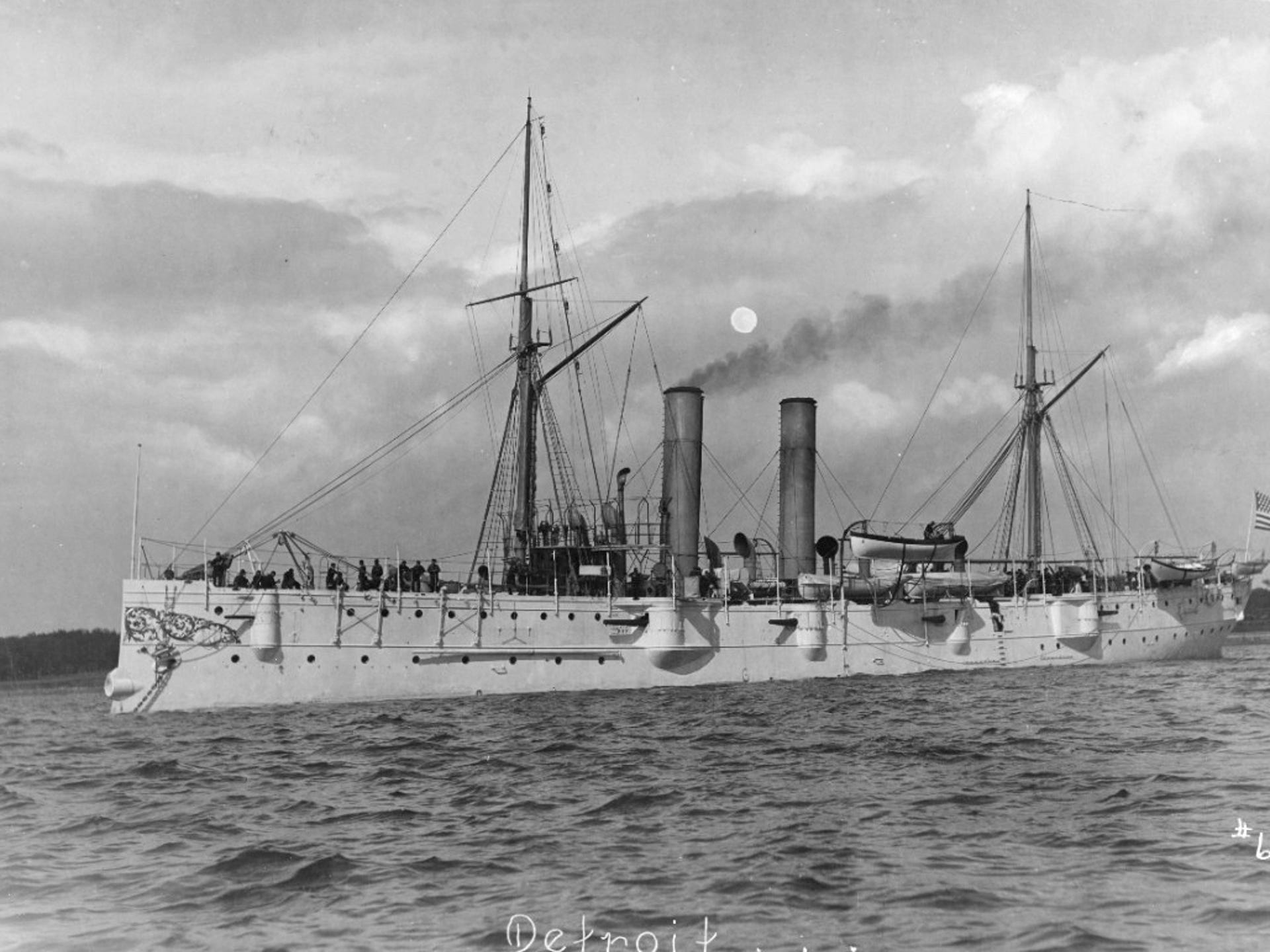
The third USS Detroit was a cruiser built at Baltimore’s Columbian Iron Works and launched late in 1891 and commissioned on July 20, 1893. Her earliest action came in Caribbean and Latin American waters. In countries with uprisings and conflict, the USS Detroit would often land troops, or bluejackets, in order to protect American interests and provide a show of force. During the Spanish-American War, the third USS Detroit was part of a squadron that shelled Fort San Cristobal and Castillo San Felipe del Morrow in May 1898. Despite its success, the USS Detroit was a troubled vessel that served only 14 years. She was decommissioned in 1910.

The fourth USS Detroit is ready for launching in Massachusetts on June 29, 1922 — four years too late for World War I, but well-timed to play a role in the follow-up. Like its predecessor, the ship spent its earliest years in Latin American waters as well as in the Atlantic. The fourth USS Detroit was classified as a light cruiser. It was 555 feet 6 inches long, steam powered and could accommodate 458. The fourth USS Detroit was moored at Pearl Harbor’s Ford Island on Dec. 7, 1941, when the Imperial Japanese Navy executed its infamous attack. The Detroit floated between the USS Utah and the USS Raleigh. A pair of torpedoes struck the Utah, sinking it. Aboard the Detroit, crew members reported a torpedo passed by its own stern — missing by just 30 yards. With many sailors ashore on leave, the USS Detroit’s remaining crew faced the task of getting their ship into the fight. Getting up to steam was huge to begin with with the reduced crew,” Evans said. “But she got up to steam and got underway with guns blazing. It was pretty dramatic.” USS Detroit gunners reported downing a pair of Japanese aircraft, but the reports were not officially confirmed. The Detroit’s after-action report showed the ship fired 10,000 .50-caliber rounds in the battle. With Japan about to take control of the Philippines, the USS Detroit received a load of gold bullion from the submarine USS Trout at Pearl Harbor and delivered it safely to the port of San Francisco. At the end of the war, the USS Detroit accompanied the USS Missouri and other ships to Tokyo Bay for the surrender of Japan, Sept. 2, 1945. It was decommissioned at Philadelphia on Jan. 11, 1946.
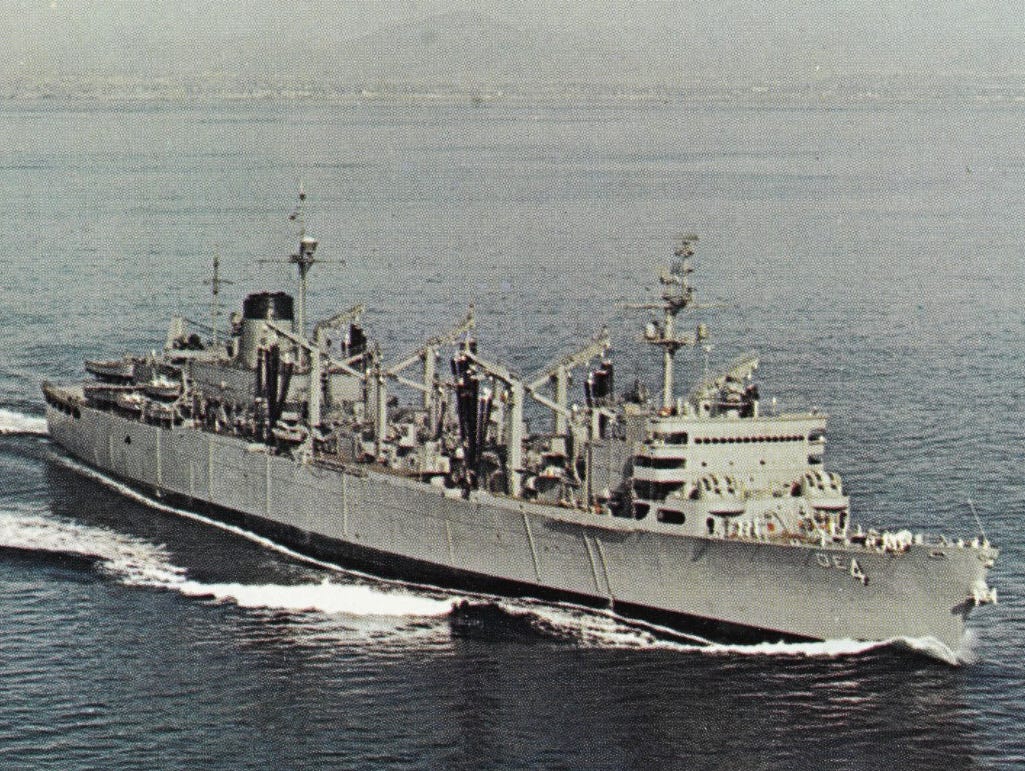
In the summer of 1969, the fifth iteration of the USS Detroit emerged from Puget Sound Naval Shipyard in Washington — a fast combat support ship destined for a 35-year career. While not a direct combatant, the fifth USS Detroit served as a support ship in the Vietnam War. At a time when it appeared North Vietnamese would overrun South Vietnamese forces in 1972, more naval firepower was called the region. To help the aircraft carrier USS Saratoga reach the area quickly, the Detroit was dispatched to meet it for a resupply at sea. That allowed the Saratoga to reach Vietnam by taking the unusual route of passing south of the African continent. The fifth USS Detroit also played a combat support role during the early 1990s in the Persian Gulf during operations Desert Storm and Desert Shield. After 9/11, she continually deployed in that region,” Evans said. “She served in the Arabian Gulf and Indian Ocean hunting traffickers — everything from al-Qaida to pirates.”


The sixth USS Detroit undergoing sea trials.
The latest USS Detroit is a new class of Navy vessel, the littoral combat ship (LCS). It is designed to operate in shallow waters — areas where larger members of the U.S. fleet cannot go. The vessel’s 13.5-foot draft makes close-to-shore operation possible, while her water jet propulsion allows for a level of speed and maneuverability no other surface combat ship has. She can do a complete turn within her own 389-foot length. A Freedom variant of the LCS class, USS Detroit was built at Fincantieri Marinette Marine in Marinette, Wisc. and was commissioned in Detroit on October 22nd, 2016.


The USS Detroit in the Detroit River with the Renaissance Center in the background. Detroit dignitaries participating in its dedication in Detroit include Detroit/Wayne County Port Authority chief John Jamian, County Executive Robert Ficano, Deputy Mayor Ike McKinnon and Barbara Levin, wife of U.S. Senate Armed Services Committee Chairman Carl Levin.
Tour the USS Detroit – A 360-degree experience
Source : Jim Lynch, “USS Detroit has long, storied history”, Detroit News, October 13, 2016; updated October 19, 2016.
Robert Allan, “USS Detroit arrives at dock in Detroit River“, Detroit Free Press, October 14, 2016.
February 21-23, 2018
Warmer temperatures and strong rains are leading to flooding on MSU’s campus, causing road and parking lot closures as campus personnel work to mitigate potential flood damage along the Red Cedar River. Classes in several buildings also are being relocated.
The melting snow and ice pack and rains are pushing the Red Cedar River to rise about 5 feet with a predicted crest of more than 10.3 feet on Feb. 22.
The following areas of campus are impacted:
- Chestnut Road between Demonstration Hall Road and the Beal Street/Kalamazoo Street intersection (at the Spartan statue) is closed.
- Red Cedar Road is closed from the Chestnut Road intersection to the entrance to Central Services.
- Northbound Red Cedar Road, north of Shaw Lane, also will be closed to through traffic.
- Lots 62W, 62E and 67, as well as the basement level of Parking Ramp #2, will be closed for the duration of flooding.
- The Auditorium Road Loop will also be closed for the duration of flooding.
- The IM Circle pool is closed.
- Classes scheduled for Thursday, Feb. 22, and Friday, Feb. 23, in the Computer Center, Jenison Fieldhouse and Kresge Art Center have been relocated. The Registrar’s office is emailing all affected students and faculty directly with information. Students also can check D2L.
Also, MSU for the first time is deploying a flood barrier on campus; it will be located between the river and the Computer Center. During this work, the area around the Computer Center will be the staging area for heavy equipment and sand used for the flood barriers. As part of that work, the following sidewalks will be closed: all sides of the Computer Center; between the Computer Center and the Hannah Administration Building; on the south side of Hannah Administration Building up to the south building entrance. The bridge from Wells Hall to the Computer Center will also be closed.
Access to the Computer Center will be minimally available through the north entrance only, but anyone wishing to enter the building will be escorted through the construction area to the entrance. All other entrances are emergency egress only. Be prepared for significant construction work and noise in the area. The south entrance to the Administration Building will also be closed.
Employees who work in buildings along the river are advised to watch for water seeping into the basements and to alert the Flood Command Center at 517-884-9511 if this occurs.
A 2020 Chevrolet Traverse Premier Redline Edition (color: Silver Ice Metallic) that drove off the line at GM’s Lansing Delta Township Assembly plant on Friday morning was cheered by hundreds of facility employees, GM officials and various elected representatives.
Among them was U.S. Sen. Debbie Stabenow, State Sen. Tom Barrett, Lansing Mayor Andy Schor and Delta Township Supervisor Ken Fletcher.
The Traverse was the 3-millionth vehicle produced at the Delta Township plant since it opened in 2006. The facility employs more than 2,500 people and is GM’s newest assembly plant in the United States.
The vehicle followed in the tire tracks of a GMC Acadia Denali, the 1-millionth vehicle assembled in 2011, and a Buick Enclave, the 2-millionth vehicle assembled in 2015.
Source : Christian Martinez, “3-millionth vehicle rolls off the line at GM’s Lansing Delta Assembly plant“, Lansing State Journal, February 21, 2020.
Michigan’s first state flag debuted Feb. 22, 1837.
According to the State of Michigan’s Department of History, Arts and Libraries, it was also known as the Brady Guard flag when it was first presented by Gov. Stevens T. Mason to the Detroit Brady Guard, the earliest incarnation of the Michigan National Guard.
The flag, which was described as “an elegant white silk banner,” bore the state’s coat of arms and was the first of three state flags unfurled during Michigan’s history.
Not long after its introduction, the flag was lost for 50 years. It was rediscovered in the basement of the Capitol – just in time for the celebration of Michigan’s 75th birthday. The flag went missing once again until a remnant was found and displayed in 2003 as part of the state’s Michigan Week festivities.
This Week In Michigan’s History, Detroit Free Press, February 18, 2007, B.4
Also see “The Brady Guard Flag : Michigan’s First State Flag”, Michigan Department of Natural Resources.
George DeBaptiste (1814-1875) was a prominent member of Detroit’s pre-Civil War black community and a leading figure in the underground railroad, in addition to being a barber, bakery proprietor, once-owner of the steamer T. Whitney, an organizer of the 102nd U.S. Colored Troops, a Mason, an active abolitionist and even a personal valet for a short time to the President of the United States. An activist in both local and national affairs, he was also on speaking terms with such famous figures as Frederick Douglass and John Brown.
Although never a slave himself, he felt a deep connection with those who were. DeBaptiste attended a few years of school in his hometown of Fredericksburg, Virginia, enough to read and write and perform basic mathematics. After schooling he apprenticed as a barber to learn a trade and eventually became a hired hand for many wealthy whites. One man DeBaptiste assisted was a Southern gambler, and by accompaning him on his poker circuit throughout the south, DeBaptiste undoubtedly witnessed the true face of slavery.
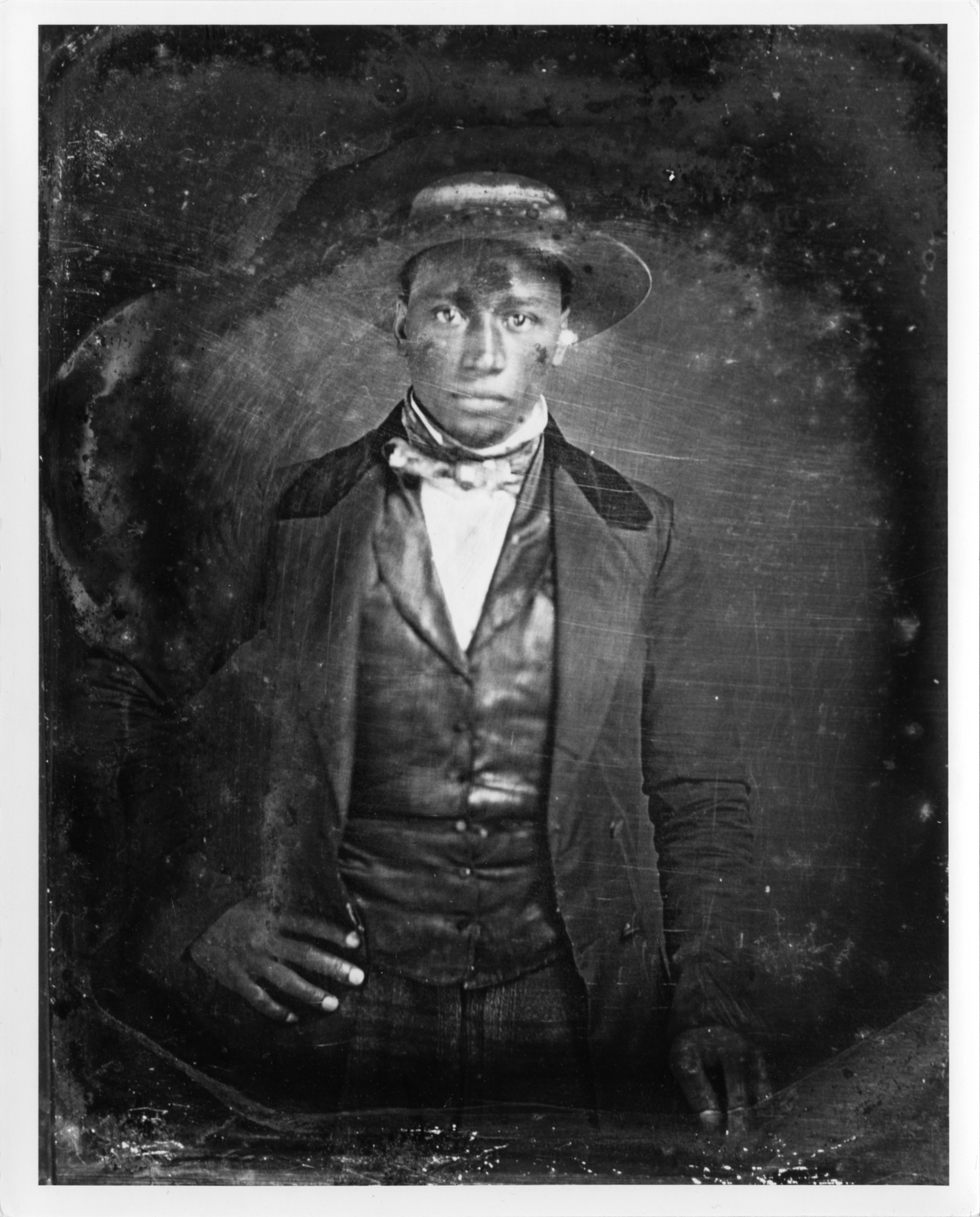
(George DeBaptiste in his early life, Historical Society of Pennsylvania)
Ready to settle down, DeBaptiste moved to Madison, Indiana in 1838 where he opened a barber shop and started a family. Almost immediately, DeBaptiste started doing what he could to help slaves escape slavery. Madison was a border town across the Ohio River from Kentucky, a slave state. According to an obituary in the Detroit Tribune, February 23, 1875:
He used to say that he had often waited on the bank of the Ohio River for half the night, while the rain was pouring down, intently listening to hear the oars of an expected boat, which contained one or more fugitive slaves. It was his custom to pilot these fugitives some ten or twelve miles north to the house of a farmer, who kept them secreted during the day, and on the next night would send them on to another stopping place. This method of travel was kept up until they arrived at Detroit, when they were taken across to Windsor. Mr. De Baptiste would usually perform these journeys on foot, walking sometimes twenty miles during the night, returning to his work the next day, probably to shave the man whose slave he assisted to escape the previous night.
DeBaptiste was soon suspected of helping slaves and was cited under black code laws for helping fugitives. DeBaptiste and his family could have faced expulsion from the state if these charges were upheld. He fought the charges in the Indiana Supreme Court arguing that these laws were unjust and unconstitutional. DeBaptiste won, onvincing the judges to at least to allow him to stay in the state. Shortly thereafter Kentucky announced a $1000 bounty for his arrest. Due to increasing common knowledge about his underground railroad activities and facing increasing harassment, DeBaptiste decided to move his family elsewhere.
DeBaptiste next found employment as a personal valet for Gen. William Henry Harrison in 1840 and in 1841 served as his steward in the White House when he was elected President. Unfortunately President Harrison caught pneumonia during his record long inaugeral address and died about a month later. ( An obituary of DeBaptiste said that at Harrison’s death, DeBaptiste was at his side and held the president in his arms at his last breath.) No longer employed as a result of President Harrison’s death, DeBaptiste returned to Madison and resumed his previous lifesstyle, including helping fugitive slaves escape. However, due to continuing and perhaps increasing harassment, DeBaptiste decided to move North to Detroit, which also had a reputation as a key stop on the Underground Railroad and offered a small but vibrant African American community.
In Detroit DeBaptiste was an instantaneous business success. He became a co-owner of a popular barber shop and worked as a sales clerk in a downtown clothing store. Soon DeBaptiste has enough money to purchase a bakery in 1850. George used his business success to try to influence politics and promote emancipation through legal channels, with limited impact. No wonder DeBaptiste continued to pursue more gratifying but illegal means of emancipation.
DeBaptiste sold his bakery and with the money bought co-ownership of a steam boat named the T.Whitney. Despite being a co-owner of the ship, DeBaptiste could not captain it since captain licenses were reserved for whites. DeBaptiste used this boat for business as well as to illegally transport slaves across the US border into Canada. To transport slaves DeBaptiste would take his “broken” wagon to a repair shop with a pro-emancipation owner. He would leave his wagon there while in the dead of night the slaves would move from DeBaptiste’s home or the 2nd Baptist Church into the wagon. The wagon was then covered in straw and horse manure. George would cover his horse’s hooves with carpeting to muffle their sound and transport the slaves to the T.Whitney where they were loaded on and marked on the international trade manifest as “Black wool”. DeBaptiste did this for years and it is unknown how many slaves he had helped escape to freedom. The Detroit Historical Museum estimates over 5000 slaves passed through the 2nd Baptist Church in Detroit.
In addition to being a busy conductor in the Underground Railroad, DeBaptiste was also involved in many more visible activism groups such as The Colored Vigilance Committee and The Negro Union League, often funding these groups from his own money gained through his businesses. He was also a member of multiple secret societies dedicated to anti-slavery activism and activity. DeBaptiste formed an organization that went by multiple names such as “The Order of the Men of Oppression”, “The African American Mysteries”, and “The Order of Emigration” . And he was a Mason.
Through these activities DeBaptiste came into contact with famous abolitionist figures such as John Brown and Frederick Douglass. John Brown and DeBaptiste were in close contact with another and developed an intricate cypher for communication via telegraph. Messages sent regarding activities of the underground railroad were hidden behind common language. John Brown met with both George DeBaptiste and William Lampert in Detroit to discuss his plans for emancipation (there is a historical marker to that effect). John Brown believed that he could spark a rebellion in the south and that all free black men of the north would join his cause. His target was Harpers Ferry, West Virginia and he was determined to conduct a raid to muster support for rebellion. Both Frederick Douglass had misgivings about the plan, offerred alternatives such as bombing white churches, but failed to convince John Brown of its shortcomings. In October of 1859 John Brown carried out his raid but his small force was quickly overrun resulting in Brown’s execution. However, the raid proved one of the catalysts for the Civil War breaking out soon thereafter.
A supporter of President Abraham Lincoln, DeBaptiste did his best to put together a Black regiment but was stymied by Michigan recruiting practices (no colored recruits, either African or Native American, until much later in the war when losses of life mounted and the white establishment became more practical. In 1863 he did help organize the 102nd U.S. Colored Troops which enlisted over 1400 volunteers. The regiment left Detroit for service in Florida, Georgia, South Carolina and elsewhere. DeBaptiste accompanied the regiment as a sutler rather than as a soldier, supplying essential foodstuffs and supplies, and serving as an unofficial figurehead.
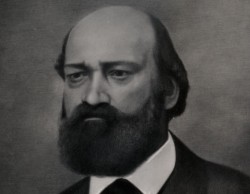
(George DeBaptiste in his later life, Detroit Public Library)
After the war George returned to Detroit and continued managing his thriving businesses, including catering. DeBaptiste won first prize for his wedding cakes in the 1873 Michigan State Fair!
He also continued supporting multiple efforts to improving the lots of Blacks in general through politics and other efforts. DeBaptiste advocated for the right of black students to attend Detroit Public Schools. In 1870, he was the first black to be elected delegate to the state Republican nominating convention. The 13th amendment to the constitution was written but was not fully enforced in the south. DeBaptiste felt it his duty to continue helping former slaves flee north. On April 7th 1870 a few weeks after the 15th amendment to the United States Constitution was written giving African Americans the right to vote, George DeBaptiste put a final notice on his office building reading “Notice to Stockholders — Office of the Underground Railway: This office is permanently closed.”
George DeBaptiste died of cancer in 1875 and was survived by his second wife, a son and daughter. Prominent obituaries appeared in Detroit papers on February 23, 1875.
Sources:
Matthew Ericksson, “Michigan Abolitionist George DeBaptiste“, Military History of the Upper Great Lakes, October 21, 2017; citing both primary and secondary sources.
George DeBaptiste wikivividly entry, also citing many sources.




